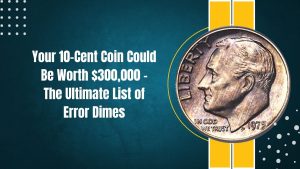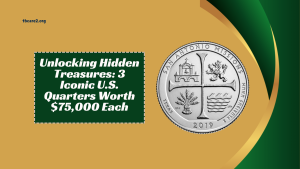The 1976 Bicentennial coins, minted to commemorate the United States’ 200th anniversary, are cherished by collectors. While most are common, certain rare varieties can command prices up to $20,000. This article delves into three such coins, detailing their unique features and the factors contributing to their high value.
Contents
1. 1976-S Silver Bicentennial Quarter
The 1976-S silver quarter was produced specifically for collectors and bears the “S” mint mark, indicating its origin from the San Francisco Mint. Unlike standard copper-nickel clad quarters, this coin comprises 40% silver, enhancing its appeal.
Key Features:
- Mint Mark: “S”
- Composition: 40% silver
- Design: Dual date “1776–1976” with a colonial drummer on the reverse
Value Determinants:
- Condition: Coins in pristine, uncirculated condition, especially those graded MS69 or higher, can fetch up to $20,000.
- Rarity: Limited mintage and high-grade specimens are scarce, driving up their value.
2. 1976-D Bicentennial Quarter with Missing Mint Mark
Most 1976-D quarters feature a “D” mint mark denoting production at the Denver Mint. However, a rare error resulted in some quarters missing this mark, making them highly sought after by collectors.
Key Features:
- Mint Mark: Missing “D”
- Design: Standard Bicentennial design with dual date and colonial drummer
Value Determinants:
- Error Rarity: The absence of the mint mark is uncommon, significantly increasing the coin’s value.
- Condition: High-grade examples without the mint mark can command several thousand dollars.
3. 1976 Type II Bicentennial Quarter
The Bicentennial quarters were minted with two distinct reverse designs: Type I and Type II. Type II features sharper, more refined lettering on the reverse and is less common than its counterpart.
Key Features:
- Design: Type II reverse with crisp lettering
- Mint Marks: Various, including “D” (Denver) and “S” (San Francisco)
Value Determinants:
- Rarity: Type II quarters are less prevalent, especially in high grades.
- Condition: Coins in exceptional condition can be valued significantly higher than face value.
Comparison Table of Rare Bicentennial Quarters
| Coin Type | Mint Mark | Composition | Unique Feature | Potential Value (USD) |
|---|---|---|---|---|
| 1976-S Silver Quarter | S | 40% Silver | Collector’s edition | Up to $20,000 |
| 1976-D Missing Mint Mark Quarter | None | Clad | Mint error | Several thousand |
| 1976 Type II Bicentennial Quarter | D, S | Clad | Sharper reverse lettering | Varies; higher in MS grades |
Factors Influencing Value
Several elements affect the value of these rare Bicentennial coins:
- Condition (Grade): Coins are graded on a scale from 1 to 70, with higher numbers indicating better preservation. Coins graded MS68 or higher are particularly valuable.
- Rarity: Limited mintage, errors, and unique features contribute to a coin’s scarcity and desirability.
- Market Demand: Collector interest can fluctuate, impacting coin values over time.
Identifying and Selling Your Coins
If you believe you possess one of these rare coins:
- Examine the Coin: Look for distinguishing features such as mint marks, errors, and design details.
- Assess Condition: Evaluate the coin’s state; uncirculated coins with no wear are more valuable.
- Seek Professional Grading: Consider having the coin graded by a reputable service to authenticate and determine its grade.
- Consult Experts: Reach out to coin dealers or numismatic experts for valuation and selling advice.
While most Bicentennial quarters are worth their face value, certain rare varieties can be exceptionally valuable. By understanding the unique characteristics and factors that contribute to their worth, you can identify potential treasures in your collection.
FAQs
What makes a Bicentennial quarter valuable?
Rarity, condition, mint errors, and unique features such as missing mint marks or special compositions enhance a Bicentennial quarter’s value.
How can I determine if my Bicentennial quarter is rare?
Examine the coin for distinguishing features like mint marks, errors, and design variations. Consulting a numismatic expert can provide further insights.
Where can I sell my rare Bicentennial coins?
You can sell them through coin dealers, auctions, or online marketplaces specializing in numismatics.
Should I have my coin professionally graded?
Yes, professional grading can authenticate your coin and provide an accurate assessment of its condition, potentially increasing its value.
Are there other valuable Bicentennial coins besides quarters?
Yes, Bicentennial half dollars and dollars with unique features or errors can also be valuable to collectors.







